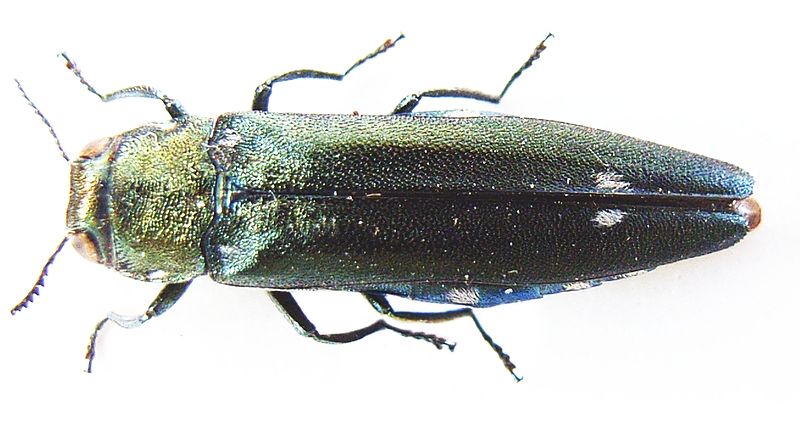 |
| Specimens from our collection! |
This past month Laura and I have had several visitors come to our collection to do research. Visiting scientist are very important for our collection because they help verify our information on different species, and we can help them with research by using our specimens. Because each specimen represents a little point in time of Oklahoma's natural history, there are lots of things scientists can use our specimens for in their research. For me personally its been a lot of fun hearing what each scientist is working on.
One of the first scientists to visit was a Master's student who is working on Buprestidae beetles. She is doing a survey of the different species of beetles found in South-Eastern Oklahoma, so she went through our collection to see which ones were found in the different counties she is interested in. Some of the records were from as far-back as 1931! Other specimens were collected more recently, and it will be interesting to see the differences in early 1900's Oklahoma versus today when the landscape has changed. These beetles are dependent on dead or dying trees for food, so forestry changes in land use make big differences in whether you can find certain beetles or not.
 |
| Example of Buprestidae. Image by Sila from http://upload.wikimedia.org/wikipedia/commons/thumb/5/57/Agrilus_biguttatus_bl.JPG/800px-Agrilus_biguttatus_bl.JPG |
Another visiting scientist this past month is helping our mollusk collection. Dr. Mather has generously donated a large collection of shells that he's collected over the years as a professor at the University of Arts and Sciences of Oklahoma, and he has been helping us identify the species he's collected. Because of his donation, we have likely become one of the best records of Oklahoma mollusks in the state (second to UASO). He's been coming in every Friday to help us label and identify the shells, and our collection has doubled in size!
 |
| Some freshwater limpet (mollusks). Shells like this were donated to our collection this year by Dr. Mather. Image from http://mkohl1.net/Fwlimpets_files/Lfuscus600.jpg. |
Not to be out-shined by Buprestidae work, our Elateridae collection has also had some visitor attention. Dr. Paul Johnson of South Dakota came to check out our Click Beetles to see if there are any new species in Oklahoma. Dr. Johnson is one of the world experts on North American Click Beetles, and has done numerous studies of the group. When he was here he helped update many of the names of taxa that haven't been looked at in nearly 60 years, and also found at least 37 new state records of beetles! This means that until he visited our collection and recognized them, those over 30 species of beetles were never recorded as existing in Oklahoma!
Last, but not least, we have had a visitor interested in our Crayfish collection. Our crayfish collection has been used in several studies of Oklahoma crayfish diversity, including contributing information for this website:
http://iz.carnegiemnh.org/crayfish/country_pages/state_pages/oklahoma.htm. Several graduate students of the Michi Tobler lab up at Oklahoma State University are also doing work on Crayfish ecology and evolutionary Biology (
lab webpage), and one PhD student is using our crayfish collection to measure how the body form changes (morphometrics) depending on the species and their distribution and habitat. Here are some examples of prepared crayfish samples in our collection that I was preparing to loan out to their research.
 |
| Some examples of our crayfish collection. Unfortunately crayfish loose their color in preservation. |
|
So that's whats been happening here behind the scenes at the SNOMNH, and how our collection of Recent Invertebrates has been contributing to biology research of Oklahoma! Come and visit yourself and see!




So neat! How vital you and your collection are to the research community!
ReplyDelete